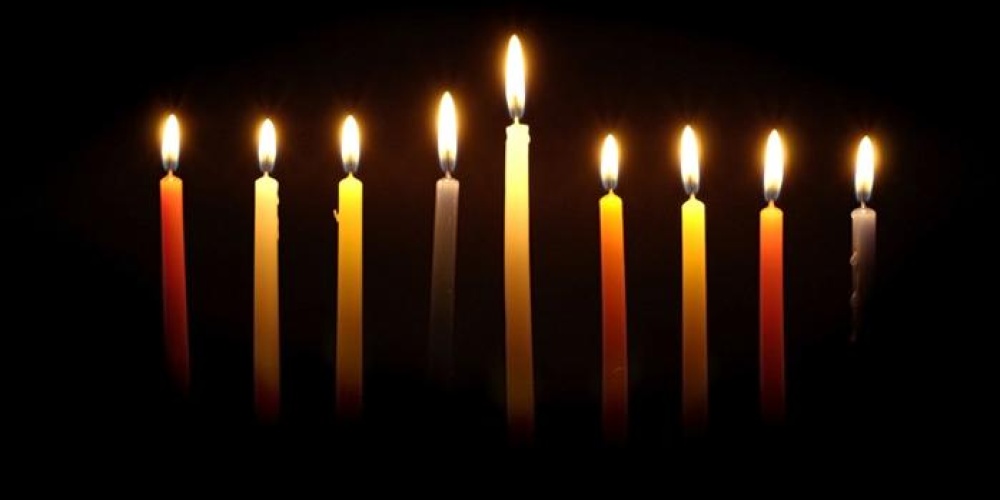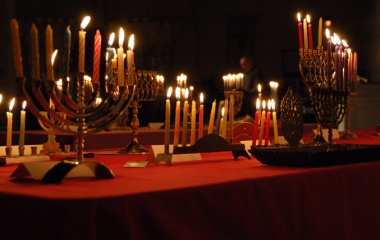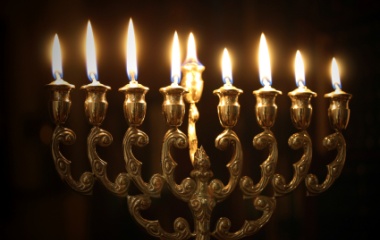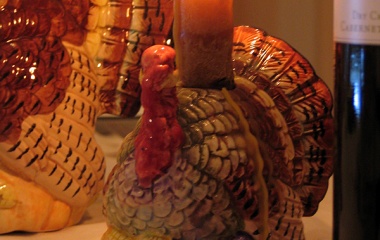
On the surface, it is difficult to understand why we celebrate Chanukah, a festival commemorating the rededication of the Temple and Jewish sovereignty in the land of Israel. We should have ceased to celebrate Chanukah in the year 70 when the Temple was destroyed, as we did all the other holidays (except Purim) listed in Megilat Taanit. That scroll listed the many holidays celebrating joyous events of the second Temple era. With no Temple, there is nothing to celebrate.
While the historical origins of Chanukah are found in the rededication of the Temple, its historical significance is found when the Jew no longer has a Temple, and is dispersed throughout the Diaspora. It is then that Chanukah would take on even greater significance. How can Judaism survive and thrive, surrounded by forces whose values are so different? Our sages ordained that we take the light of the menorah, light being the symbol of Torah, and place it outside our door. The values of the Jewish home are to illuminate us as we enter the world around us.
Whereas Chanukah was originally a holiday observed in the Temple—and logically should be commemorated in shul, our miniature Temples—the rabbis understood that in the new reality, the menorah would have to be lit in each and every home. Ner ish ubeito, each household is to light one candle for each of the eight nights of Chanukah. Unfortunately, at times it was dangerous to take our Judaism outside: “In times of danger, we leave it on the table and it is enough”.
Yet our tradition has added enhancements to the mitzvah. The mehadrin, those who want to beautify the mitzvah, light one candle for each member of the household; if five people live in the home, five candles are lit on each of the eight nights. How this is more beautiful is not explained, and it seems counterintuitive. We do not say that it is better if all in the home recite Kiddush; in fact, it is likely better to have just one person say it—b’rov am hadrat melech, when many join together in a mitzvah, the glory of the King is enhanced. Why, then, should all light the menorah?
Those to whom Judaism is beautiful understand that it is not enough to have one candle in each home; we want each and every person to see the beautiful way of life that Judaism is meant to be. Ner lechol echad v’echad, each person must light their own candle, to ignite the passion for Judaism so that it burns within them. Each person must take the traditions of the home and make them his or her own. We pray to the G-d of Abraham, the G-d of Isaac, and the G-d of Jacob. Each had a unique relationship with G-d, and so must we.
Only when we delight in the individuality of each member of the household can we reach the stage of mehadrin min hamehadrin, the most beautiful of homes, where we are ma’alim bekodesh, we ascend in sanctity, adding a new light each and every day.
The Torah reading for Chanukah describes the chanukat hamizbeach, the dedication ceremony of the original mishkan in the desert, most appropriate for Chanukah. It is not just the dedication we are celebrating, but the gifts brought by each of the twelve leaders of the tribes. While externally they were all the same, they were—if one scratches beneath the surface—twelve very different gifts. The Torah thus records each one separately, highlighting the uniqueness of each.
The formation of the Jewish people was only complete with the 12 sons of Jacob, who formed the 12 tribes of Israel. While Avraham and Yitzchak had children who were so different from each other that one had to be rejected, the 12 sons of Yaakov had a common bond. Yet that bond was made of 12 distinct pieces. Judaism can only flourish if each of the 12 different pieces are encouraged to light their own menorah. Joseph and his brothers were quite different from each other. Ultimately, and there was no guarantee it would turn out this way, they remained part of one family, our family. And if it is to be a beautiful family, each member must light their own menorah.



